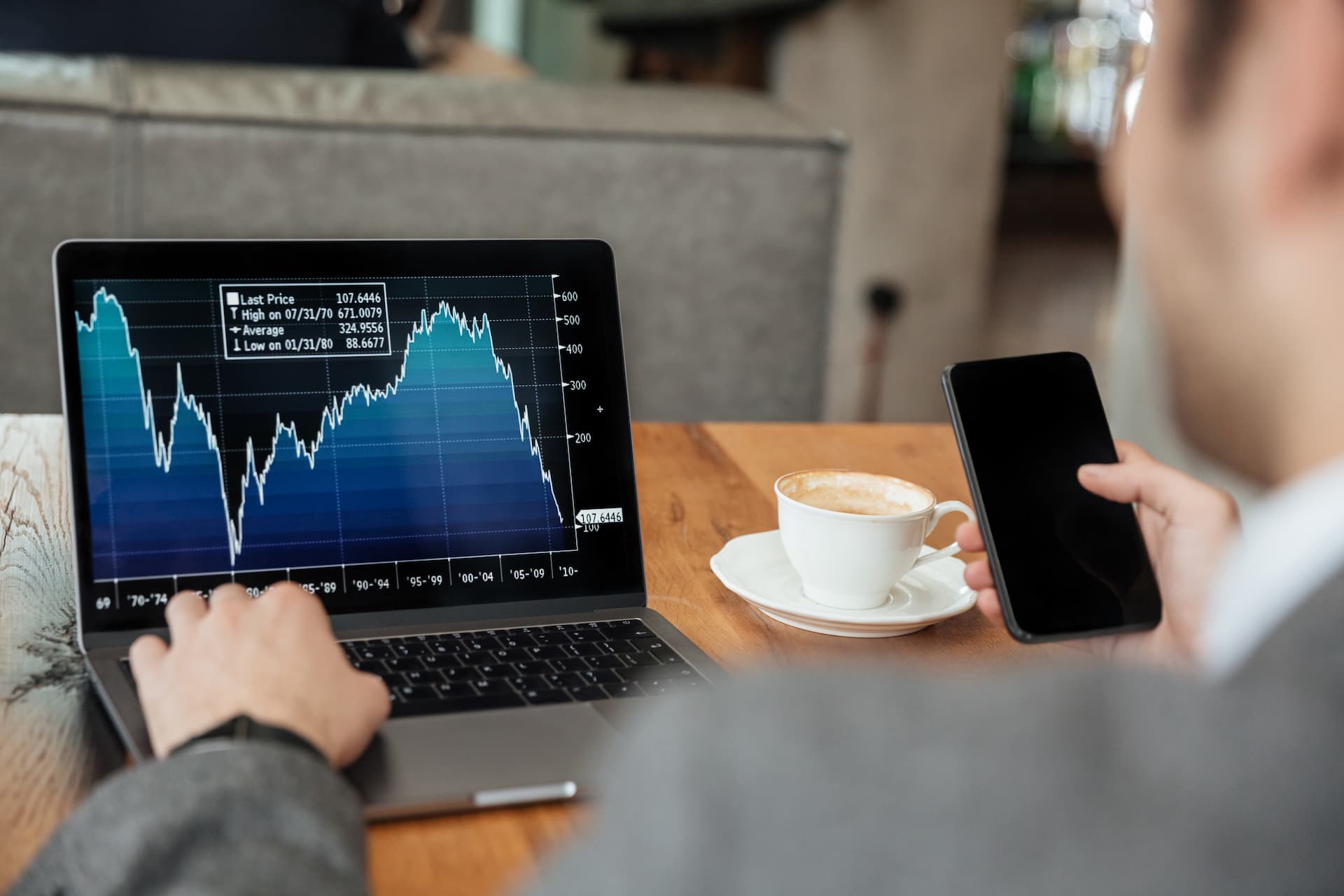What is Swing Trading?
Discover the fundamentals of swing trading, including strategies, benefits, and tips for success in the financial markets.

What is Swing Trading?
Swing trading is a dynamic and strategic approach to trading that focuses on capturing short- to medium-term gains in various financial instruments such as stocks, forex, and commodities. Unlike day trading, which involves entering and exiting multiple trades within a single day, swing trading is more flexible, allowing traders to hold positions for several days or even weeks. This strategy is particularly appealing to those who want to participate in the markets without the need for constant monitoring, making it a popular choice among part-time traders and those with other commitments.
The Core Principles of Swing Trading
At its core, swing trading seeks to capitalize on "swings" in the market. These swings are the natural fluctuations in price that occur within a larger trend. For example, in an upward-trending market, a swing trader might look to buy during a temporary dip, with the expectation that the price will continue to rise. Conversely, in a downward-trending market, a swing trader might sell short during a temporary rally, anticipating that the price will resume its decline.
Swing trading relies heavily on technical analysis, which involves studying past price movements to predict future trends. Traders use a variety of technical tools and indicators to identify potential entry and exit points. These tools help traders make informed decisions based on historical data, allowing them to anticipate market movements with a higher degree of accuracy.
Key Technical Indicators in Swing Trading
Several technical indicators are particularly useful in swing trading:
-
Moving Averages: Moving averages are used to smooth out price data and identify the overall direction of the market. Swing traders often use a combination of short-term and long-term moving averages to confirm trends. For example, a 50-day moving average crossing above a 200-day moving average might signal a bullish trend in a stock or forex pair.
-
Relative Strength Index (RSI): The RSI is a momentum oscillator that measures the speed and change of price movements. It ranges from 0 to 100 and is used to identify overbought or oversold conditions in the market. When the RSI crosses above 70, it suggests that the asset might be overbought, signaling a potential reversal. Conversely, an RSI below 30 indicates that the asset might be oversold, suggesting that a price increase could be on the horizon.
-
Fibonacci Retracement Levels: Fibonacci retracement is a popular tool used to identify potential support and resistance levels based on the idea that markets tend to retrace a predictable portion of a move, after which they continue in the original direction. Swing traders use Fibonacci levels to predict the extent of a price correction within a trend, providing potential entry and exit points.
-
MACD (Moving Average Convergence Divergence): The MACD is a trend-following momentum indicator that shows the relationship between two moving averages of an asset's price. It is used to identify changes in the strength, direction, momentum, and duration of a trend. When the MACD line crosses above the signal line, it is considered a bullish signal, while a cross below indicates a bearish signal.
Swing Trading Strategies
Swing trading strategies can vary widely, depending on the trader's goals and the market being traded. However, some common strategies include:
-
Trend Following: This strategy involves identifying the overall direction of the market and trading in the direction of the trend. For example, in an uptrend, a swing trader might buy during a pullback, expecting the price to resume its upward movement. Conversely, in a downtrend, a trader might sell short during a temporary rally, expecting the price to continue its decline.
-
Range Trading: In a range-bound market, prices tend to oscillate between a defined support and resistance level. Swing traders can capitalize on these price fluctuations by buying at the support level and selling at the resistance level, or vice versa. This strategy requires a keen understanding of market psychology and the ability to recognize when the price is likely to reverse direction.
-
Breakout Trading: Breakout trading involves entering a trade when the price breaks out of a predefined range or chart pattern, such as a triangle or rectangle. The idea is to capture the momentum that typically follows a breakout, as prices often move quickly once they escape from a range. Traders use various indicators, such as volume and volatility, to confirm the strength of the breakout before entering a trade.
-
Reversal Trading: This strategy involves identifying potential reversal points where the price is likely to change direction. Reversal traders look for signs of exhaustion in the current trend, such as divergence in the RSI or MACD, and then enter a trade in the opposite direction. This approach requires precise timing and a thorough understanding of technical analysis.
The Role of Fundamental Analysis
While technical analysis is the primary tool used by swing traders, fundamental analysis can also play a role, particularly when trading stocks or other assets sensitive to news and economic data. Fundamental analysis involves evaluating an asset's intrinsic value by examining factors such as earnings reports, economic indicators, and news events. For example, a swing trader might buy a stock after a strong earnings report, expecting that positive sentiment will drive the price higher in the short term.
In the forex market, traders might use fundamental analysis to anticipate how economic data releases, such as employment reports or central bank announcements, will affect currency prices. By combining fundamental insights with technical analysis, swing traders can make more informed decisions and increase their chances of success.
Risk Management in Swing Trading
Effective risk management is crucial in swing trading, as it helps protect against significant losses and ensures long-term profitability. Some key risk management techniques include:
-
Position Sizing: Determining the appropriate position size is essential for managing risk. Swing traders typically risk a small percentage of their trading capital on each trade, ensuring that a single loss does not have a significant impact on their overall portfolio. Position sizing can be calculated based on the trader's risk tolerance and the distance between the entry point and the stop-loss level.
-
Stop-Loss Orders: A stop-loss order is a predefined price level at which a trade will be automatically closed to prevent further losses. Swing traders use stop-loss orders to limit their downside risk and protect their capital. Placing a stop-loss order below a key support level or above a key resistance level can help traders avoid significant losses if the market moves against them.
-
Take-Profit Orders: Similar to stop-loss orders, take-profit orders are used to lock in profits once a trade reaches a certain price level. By setting a take-profit order at a predetermined price target, traders can ensure that they exit the trade at a favorable price, capturing gains before the market has a chance to reverse.
-
Risk-to-Reward Ratio: Swing traders often aim for a risk-to-reward ratio of at least 1:2, meaning that for every dollar risked, they aim to make at least two dollars in profit. This approach ensures that even if some trades result in losses, the overall profitability remains positive. By carefully selecting trades with favorable risk-to-reward ratios, swing traders can increase their chances of long-term success.
Psychological Aspects of Swing Trading
Swing trading requires not only technical and analytical skills but also psychological resilience. Holding positions for several days or weeks can be stressful, especially during periods of market volatility. Traders must remain disciplined and stick to their trading plan, even when emotions like fear or greed tempt them to make impulsive decisions.
Successful swing traders often develop a trading routine that helps them stay focused and avoid emotional pitfalls. This routine might include regular market analysis, journaling trades, and setting clear goals for each trading session. By maintaining a disciplined approach and focusing on the long-term, swing traders can overcome psychological challenges and achieve consistent results.
Conclusion
Swing trading offers a flexible and potentially lucrative approach to trading the financial markets. By focusing on short- to medium-term price movements and using a combination of technical and fundamental analysis, swing traders can capitalize on market swings while managing risk effectively. Whether trading stocks, forex, commodities, or cryptocurrencies, swing trading provides an opportunity to profit from the market's natural fluctuations.
However, success in swing trading requires a solid understanding of market dynamics, effective risk management, and the ability to remain disciplined in the face of market uncertainty. By developing a well-thought-out trading plan and adhering to it consistently, swing traders can navigate the markets with confidence and achieve their financial goals.
TAGS
Latest Education Articles
Show more
Earnings Reports and Equity CFDs

Trend vs. Range Strategies

Trading Breakouts vs. Pullbacks

Hedging Basics for Intermediate Traders
Take your trading to the next level.
Join the broker built for global success in just 3 easy steps. A seamless experience built for traders who value speed and simplicity.

Create Your Account

Make Your First deposit
